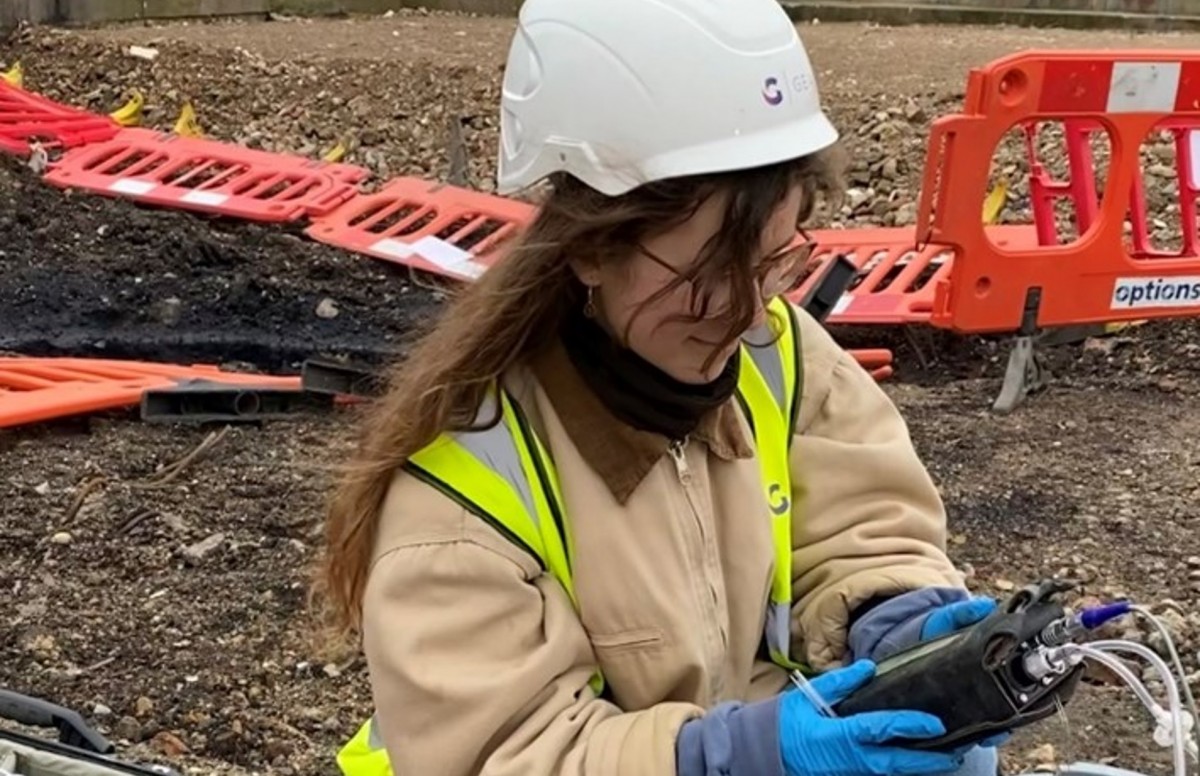The Ultimate Guide To Geotheta
The Ultimate Guide To Geotheta
Blog Article
What Does Geotheta Mean?
Table of ContentsWhat Does Geotheta Mean?Rumored Buzz on GeothetaSome Ideas on Geotheta You Should KnowSome Of GeothetaA Biased View of Geotheta

They perform website investigations, accumulate examples, perform research laboratory examinations, and assess data to evaluate the suitability of the ground for construction jobs - Engineer of Record. Based upon their searchings for, geotechnical designers provide suggestions for structure design, slope security, retaining structures, and mitigation of geotechnical threats. They collaborate with various other specialists, such as designers, architectural engineers, and building and construction groups, to ensure that geotechnical considerations are integrated into the total job layout and application
By evaluating the behavior and residential properties of soil and rock, they can identify possible geotechnical hazards such as landslides, soil negotiation, or incline instability. Their experience helps protect against failures or crashes that could threaten lives and building. Below are some thorough tasks and responsibilities of a geotechnical designer: Site Investigation: Geotechnical designers conduct website examinations to collect data on subsurface conditions.
They translate the data to recognize the properties and habits of the soil and rock, including their stamina, permeability, compaction attributes, and groundwater problems. Geotechnical Analysis and Design: Geotechnical designers assess the information collected throughout website examinations to analyze the security and viability of the site for building and construction jobs. They execute geotechnical computations and modeling to review elements such as birthing capacity, settlement, slope stability, side earth stress, and groundwater flow.
Excitement About Geotheta
Foundation Layout: Geotechnical designers play an important duty in making foundations that can safely sustain the desired structure. They evaluate the soil conditions and load requirements to identify the suitable foundation kind, such as superficial foundations (e.g., grounds), deep foundations (e.g (https://moz.com/community/q/user/geotheta?_gl=1*xkyvtd*_up*MQ..*_ga*NjU0Mjk2NzIxLjE3MjI2MDU1Nzc.*_ga_DS7K9Q3S5W*MTcyMjYwNTU3Ni4xLjAuMTcyMjYwNTU3Ni4wLjAuMA..)., heaps), or specialized techniques like soil improvement. They think about aspects such as settlement limits, bearing capacity, and soil-structure interaction to establish optimal foundation layouts
They evaluate construction plans, display site tasks, and carry out field assessments to validate that the layout suggestions are complied with. If unanticipated geotechnical issues emerge, they analyze the scenario and offer suggestions for removal or modifications to the design. Threat Assessment and Mitigation: Geotechnical engineers assess geotechnical dangers and risks connected with the job website, such as landslides, liquefaction, or soil disintegration.

Cooperation and Communication: Geotechnical designers function carefully with various other specialists associated with a task, such as designers, architectural engineers, and construction teams. Effective communication and collaboration are necessary to incorporate geotechnical considerations into the overall task design and construction procedure. Geotechnical designers offer technological competence, solution queries, and make certain that geotechnical demands are satisfied.
Some Known Incorrect Statements About Geotheta
Below are some sorts of geotechnical designers: Foundation Engineer: Structure engineers concentrate on creating and assessing structures for structures. They analyze the dirt conditions, load needs, and site characteristics to determine the most proper structure kind and layout, such as shallow structures, deep foundations, or specialized methods like pile foundations.
They examine the factors influencing incline stability, such as dirt properties, groundwater problems, and incline geometry, and create approaches to protect against incline failures and minimize risks. Quake Designer: Earthquake designers concentrate on analyzing and making structures to hold up against seismic pressures. They analyze the seismic risk of a site, assess soil liquefaction capacity, and develop seismic layout standards to make certain the security and resilience of frameworks throughout quakes.
They carry out field screening, accumulate examples, and examine the accumulated information to characterize the soil residential properties, geologic formations, and groundwater conditions at a site. Geotechnical Instrumentation Engineer: Geotechnical instrumentation engineers concentrate on tracking and determining the actions of soil, rock, and frameworks. They mount and maintain instrumentation systems that monitor elements such as dirt settlement, groundwater degrees, slope motions, and structural displacements to evaluate efficiency and supply very early warnings of potential problems.
The Ultimate Guide To Geotheta
They carry out tests such as triaxial examinations, combination examinations, direct shear tests, and leaks in the structure examinations to gather data for geotechnical evaluation and design. Geosynthetics Engineer: Geosynthetics designers focus on the style and application of geosynthetic materials, such as geotextiles, geogrids, and geomembranes. They use these materials to enhance dirt stability, enhance slopes, supply drainage services, and control disintegration.
They have a tendency to be investigative individuals, which implies they're intellectual, introspective, and analytical. They wonder, methodical, logical, analytical, and sensible. Several of them are also social, implying they're kind, charitable, cooperative, patient, caring, helpful, understanding, tactful, and friendly. Does this seem like you? Take our complimentary job examination to figure out if geotechnical engineer is among your top job matches.
In the workplace environment, geotechnical engineers use specialized software tools to do estimations, produce styles, and examine information. They prepare reports, review job specifications, connect with customers and employee, and coordinate job tasks. The office setting provides a helpful environment for research study, analysis, and cooperation with other experts associated with the job.
Geotheta Fundamentals Explained
They often visit project websites to perform website investigations, examine geotechnical problems, and collect data for evaluation. These brows through entail taking a trip to different places, often in remote or challenging surfaces. Geotechnical designers may execute dirt sampling, conduct tests, and monitor building and construction tasks to guarantee that the geotechnical elements of the job are being implemented properly.
Geotechnical designers also function in specialized geotechnical research laboratories. Geotechnical research laboratory engineers function thoroughly in these settings, dealing with testing devices, operating instruments, and videotaping information.
Report this page